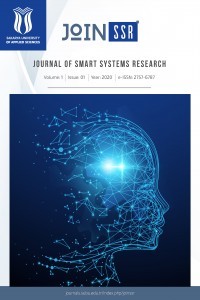Kidney Segmentations Using CNN models
Kidney Segmentations Using CNN models
kideny, segmeantion, CNN,
___
- “What is HuBMAP”, HuBMAP, Accessed in 10.04.2021, Available [Online]: https://hubmapconsortium.org/what-is-hubmap.
- “What Is Image Segmentation?”, MathWorks, Accessed in 11.06.2021, Available [Online]: https://www.mathworks.com/discovery/image-segmentation.html.
- B. De Brabandere, D. Neven, L. Van Gool, “Semantic instance segmentation for autonomous driving”, in: The IEEE Conference on Computer Vision and Pattern Recognition (CVPR), Workshops, 2017.
- R. I. Haque, J. Neubert, “Deep learning approaches to biomedical image segmentation”, Informatics in Medicine Unlocked, 2020.
- J. Song, L. Xiao, M. Molaei, Z. Lian, “Multi-layer boosting sparse convolutional model for generalized nuclear segmentation from histopathology images”, Knowledge-Based Systems, vol. 176, pp. 40 – 53, 2019.
- S. M. Sheehan, & R. Korstanje, “Automatic glomerular identification and quantification of histological phenotypes using image analysis and machine learning”, American Journal of Physiology-Renal Physiology, vol. 315, no. 6, pp. 1644-1651, 2018.
- J. Gallego, A, Pedraza, S. Lopez, G. Steiner, L. Gonzalez, A. Laurinavicius, & G. Bueno, “Glomerulus classification and detection based on convolutional neural networks”, Journal of Imaging, vol. 4, no. 1, pp. 20, 2018.
- J. D. Bukowy, A. Dayton, D. Cloutier, A. D. Manis, A. Staruschenko, J. H. Lombard & A. W. Cowley, “Region-based convolutional neural nets for localization of glomeruli in trichrome-stained whole kidney sections”, Journal of the American Society of Nephrology, vol. 29, no. 8, pp.2081-2088, 2018.
- S. Kannan, L. A. Morgan, B. Liang, M. G. Cheung, C. Q. Lin, D. Mun, & V. B. “Kolachalama, Segmentation of glomeruli within trichrome images using deep learning”, Kidney international reports, vol. 4, no. 7, pp. 955-962, 2019.
- N. Altini, G. D. Cascarano, A. Brunetti, F. Marino, M. T. Rocchetti, S. Matino, & V. “Bevilacqua, Semantic segmentation framework for glomeruli detection and classification in kidney histological sections”, Electronics, vol. 9, no. 3, pp. 503, 2020.
- Bueno, M. M. Fernandez-Carrobles, L. Gonzalez-Lopez, & O Deniz, “Glomerulosclerosis identification in whole slide images using semantic segmentation”, Computer Methods and Programs in Biomedicine, vol. 184, 2020.
- “Data Description”, HuBMAP - Hacking the Kidney, Accessed in 10.04.2021, Available [Online]: https://www.kaggle.com/c/hubmap-kidney-segmentation/data
- N. R. Pal, S. K. Pal, “A review on image segmentation techniques”, Pattern Recognition, vol. 26, no. 9, pp. 1277 – 1294, 1993.
- N. M. Zaitoun, M. J. Aqel, “Survey on image segmentation techniques”, Procedia Computer Science, vol. 65, pp. 797 – 806, International Conference on Communications, management, and Information technology (ICCMIT’2015), 2015.
- D. Zhang, Y. Song, D. Liu, H. Jia, S. Liu, Y. Xia, H. Huang, W. Cai, “Panoptic segmentation with an end-to-end cell r-cnn for pathology image analysis”, pp. 237–244, 2018.
- “Why MobileNet?” ProgrammerSought, Accessed in 13.06.2021, Available [Online]: https://www.programmersought.com/article/68608226299/
- M. Tan, & Q. Le, “Efficientnet: Rethinking model scaling for convolutional neural networks”, In International Conference on Machine Learning, pp. 6105-6114. PMLR, 2019.
- G. L. W. Yong, & G. Lemaitre, “Evaluation measures for segmentation”, Matrix, vol. 1, no. 1, pp. 2, 2016.
- Başlangıç: 2020
- Yayıncı: Sakarya Uygulamalı Bilimler Üniversitesi
GERÇEK ZAMANLI HAREKET ALGILAMAYA DAYALI BİR GÖZETİM VE GÜVENLİK UYARI SİSTEMİ
Ahmed Shahab Ahmed AL-SLEMANİ, Ahmet ZENGİN
Kidney Segmentations Using CNN models
Mohammed MANSOUR, Mert Süleyman DEMİRSOY, Mustafa Çağrı KUTLU
Ayşe Betül DEMİR, Gözde ÇELEBİ EFE, Şuayb Çağrı YENER, Cuma BİNDAL
Hamid ASADİ DERESHGİ, Ersin GÖSE, Dilan DEMİR, Hasan GHANNAM
